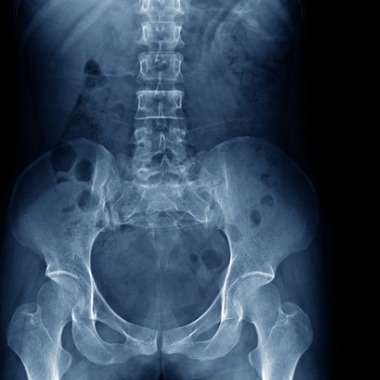Bilateral Sacroiliitis: When Pain Affects Both SI Joints
Sacroiliitis is a condition that can cause a lot of discomfort, primarily because it affects the sacroiliac (SI) joints located at the base of your spine, where it connects to your pelvis. While it’s common to experience lower back pain or radiating pain from just one SI joint, some people face discomfort in both joints, a condition known as bilateral sacroiliitis.

Understanding Bilateral Sacroiliitis
Bilateral sacroiliitis involves inflammation in both of the SI joints. These joints play a crucial role in supporting and stabilizing your pelvis and spine. They also absorb impact when you walk, run, or jump, protecting your spine from the shock. When both of these joints are inflamed, it can lead to symptoms that affect your ability to perform daily activities comfortably.
Symptoms to Watch For
- Pain in the lower back or buttocks
- Pain that extends down one or both legs
- Pain that worsens with prolonged standing, climbing stairs, or after periods of sitting
- Stiffness in the pelvis or hips, especially in the morning or after resting for long periods
- Disturbed sleep patterns and disturbed sitting patterns due to pain
What Causes Bilateral Sacroiliitis?
Several factors can lead to bilateral sacroiliitis, including:
- Autoimmune diseases: Conditions like ankylosing spondylitis or psoriatic arthritis can cause inflammation in various joints, including the SI joints.
- Pregnancy: The pelvis expands to prepare for childbirth, which can put extra stress on the SI joints.
- Injury: A fall, car accident, or any impact that affects the lower back can injure the SI joints.
- Infection: Though rare, an infection in the SI joints can cause sacroiliitis.
- Wear and tear: Just like any other joint in your body, the SI joints can degenerate over time, leading to inflammation.
- Spine surgeries: Fusing vertebrae reduces flexibility in the spine, which can increase stress on the SI joint.
Diagnosing Bilateral Sacroiliitis
Diagnosing bilateral sacroiliitis involves a combination of medical history review, physical exams, and imaging tests like X-rays or MRI scans. Your healthcare provider may also perform specific maneuvers to test for pain in the SI joints. In most cases, a diagnostic injection into the SI joint can help confirm the diagnosis by providing temporary relief from the pain.
Treatment Options
Treatment for bilateral sacroiliitis aims to reduce pain and inflammation, improve joint function, and prevent further joint damage.
Conservative Options
- Medication: Nonsteroidal anti-inflammatory drugs (NSAIDs) can help reduce pain and inflammation. In more severe cases, your doctor might prescribe stronger medications or biologics.
- Physical Therapy: A physical therapist can teach you exercises to strengthen the muscles around the SI joints, improving stability and reducing pain.
- SI Joint Injections: Corticosteroid injections directly into the SI joints can provide temporary relief from pain and inflammation.
LinQ SI Joint Stabilization System
In severe cases where other treatments haven’t helped, the minimally invasive LinQ SI Joint Stabilization System offered by PainTEQ is designed to provide long-term relief.
This in-office procedure involves placing a small implant (roughly the size of an almond) into the dysfunctional SI joint. In the case of bilateral sacroiliitis, one LinQ implant would be placed in both the left and right SI joints. This helps to stabilize the joints and reduce pain.
Patients go home shortly after the procedure and can usually resume daily living activities within a couple of weeks, depending on how well they are healing and based on the physician’s orders.
Living with Bilateral Sacroiliitis
Managing bilateral sacroiliitis often requires a combination of treatments tailored to your specific needs. Lifestyle changes, such as maintaining a healthy weight, practicing good posture, and avoiding activities that strain the SI joints, can also help manage symptoms.
If you’re experiencing symptoms of bilateral sacroiliitis, it’s important to consult with a healthcare provider skilled in diagnosing and treating SI joint dysfunction. PainTEQ can connect you with a partnering provider who can determine the best treatment plan for you, including innovative options like the LinQ procedure.
Remember, you’re not alone in this journey. With the right approach, you can manage your symptoms and lead a more comfortable life.



